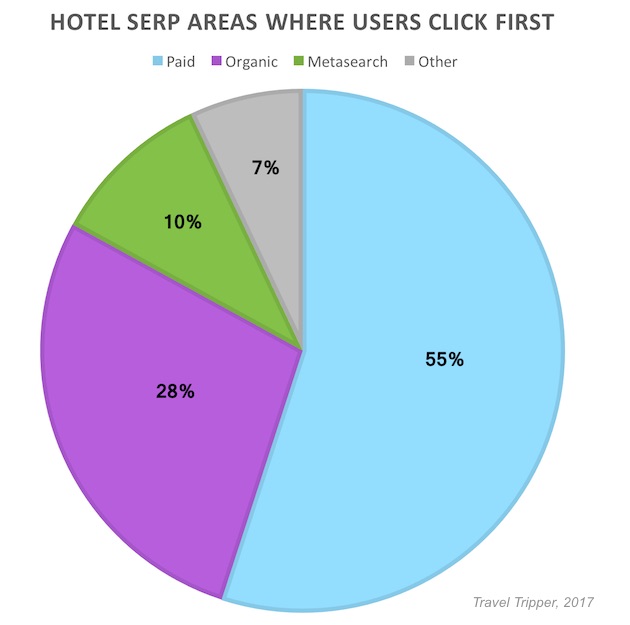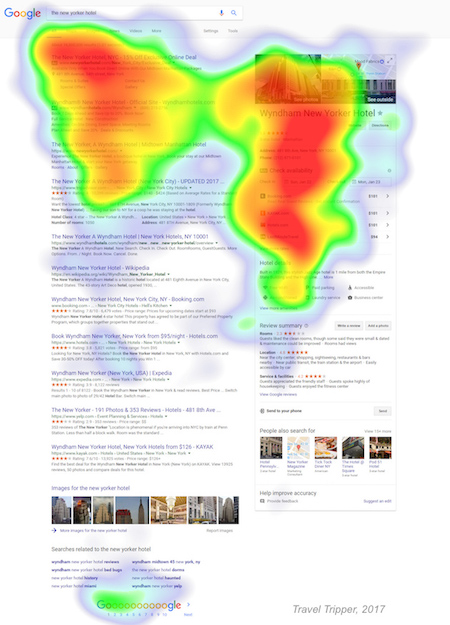The way consumers view Google results pages related to hotel searches has changed significantly over the past few years, according to recent research from Travel Tripper.
The report was based on an eye-tracking study conducted using the Sticky platform. As part of the study, 100 consumers were shown desktop Google search engine results pages (SERPs) for three hotel names (Capitol Hill Hotel, Park Lane Hotel, and The New Yorker Hotel). Participants' eye-movements were tracked as they looked at each SERP for 15 seconds.
In past studies, consumers tended to look at desktop SERPs in an F pattern: starting at the top with paid ads, then moving down to organic results, then across to the ads in the right column.
The rollout of new right column units by Google that display a hotel's business listing and metasearch price results has changed this behavior, the analysis found.
Consumers now focus intently on the top of the page at the paid ads and hotel business listing. Organic results receive significantly less attention.
The researchers found that when looking at hotel SERPs, consumers tend to look at the paid ads at the top first, the business listing second, and then either the organic results or metasearch prices.
In addition to tracking eye movements, the researchers asked participants which links on the SERPs they would be most likely to click on.
More than half (55%) said they would click on a paid link, 28% on an organic listing, 10% on a metasearch link, and 7% elsewhere (e.g., on the hotel photo in the business listing).

About the research: The report was based on an eye-tracking study conducted using the Sticky platform. As part of the study, 100 consumers were shown Google search engine results pages (SERPs) for three hotel name keywords (Capitol Hill Hotel, Park Lane Hotel, and The New Yorker Hotel). Participants' eye-movements were tracked as they looked at each SERP for 15 seconds.






